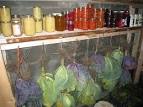Almost finished: We are sorry that we are coming upon the final pages of “Animalium”, by Katie Scott and Jenny Broom. This splendid book is rich in conversation-provoking information and rich in captivating illustrations. This is a book that we have looked forward to opening every single night (even last night, when we had to read about rodents).
Speaking of rodents:
– To establish a baseline, we took a little “Is this a rodent?” quiz, then voted upon the cutest. Our faves: chipmunks, chinchillas, hamsters, guinea pigs, voles, and porcupines. Not our fave: squirrels are on our bad list at the moment (we are unhappily hosting one in our attic, and are attempting to remove him humanely)(but this is not going well, as he is a member of Squirrel Mensa).
– February 1st I gave my son a pre-test on the big doings of February 2nd: Groundhog Day. I was quite surprised by how much information he knew about this “holiday”. I am not sure we added much to his store of knowledge, but we read through Wikipedia entries on groundhogs and Groundhog Day, and concluded with a small discussion about whether Punxsutawney Phil was a bit plumper than the average groundhog. We learned that groundhogs are the same thing as woodchucks, which prompted me to recite the “How much wood can a woodchuck chuck” tongue twister. Rodents and poetry on the same night. Winner.
Farmer Brown’s petting zoo story problem – The first graders from the 4 local elementary schools love visiting Farmer Brown’s petting zoo. This year, Farmer Brown has hired a photographer to snap photos of each first grader with one of his sweet hamsters. The photos sell for $2 each (and everyone purchases one). It costs Farmer Brown 50 cents to process each photo and he pays the photographer $35 for each school visit. There are 40 first grade children in each school. NEW CONCEPTS!: What is Farmer Brown’s GROSS income from the endeavor? What is Farmer Brown’s NET income (after paying the photo processing and the photographer) from the endeavor?
What a rat! We have begun another “A Wicked History” (we do love this series), this time we are learning about Catherine the Great, Empress of Russia. Right off the bat we find out that she came to power by disposing of her husband, Tsar Peter III. Yikes. What a rat. We want to know more.
Music for Groundhog Day: Was Punxsutawney Phil going to be greeted by bright sunlight or cloudy skies? We had the music to mark the occasion:
- Phil sees his shadow: “Winter”, from Vivaldi’s timeless violin concerto of 1723, “The Four Seasons”. Ugh. We don’t want 6 more weeks of winter! But we are always happy for a tiny slice of Itzhak Perlman magic:
- Phil sees his shadow: “Waltz of the Snowflakes” from Tchaikovsky’s Nutcracker Ballet, which premiered in 1892. We may be weary of the cold weather, but at least Tchaikovsky revives us with a winter that is as pretty as it is capricious (vocab):
- Phil doesn’t see his shadow: “Symphony No. 6 in F major” (movement 1), composed by Beethoven in 1808. Known also as “The Pastoral Symphony” (familiar to many from Disney’s award winning “Fantasia” of 1940), it is all about the promise of spring. Leonard Bernstein (always a conductor we want to watch) leads the Vienna Philharmonic in this video:
- Phil doesn’t see his shadow: “Put on a Happy Face”, composed by Charles Strouse (lyrics by Lee Adams) for the 1960 Broadway production “Bye Bye Birdie”. Hey, Phil! Grey skies are gonna clear up! My son was tapping his toes to this rendition from the mid sixties, featuring The Supremes:
Welcome to the best part of my day!
– Jane BH































